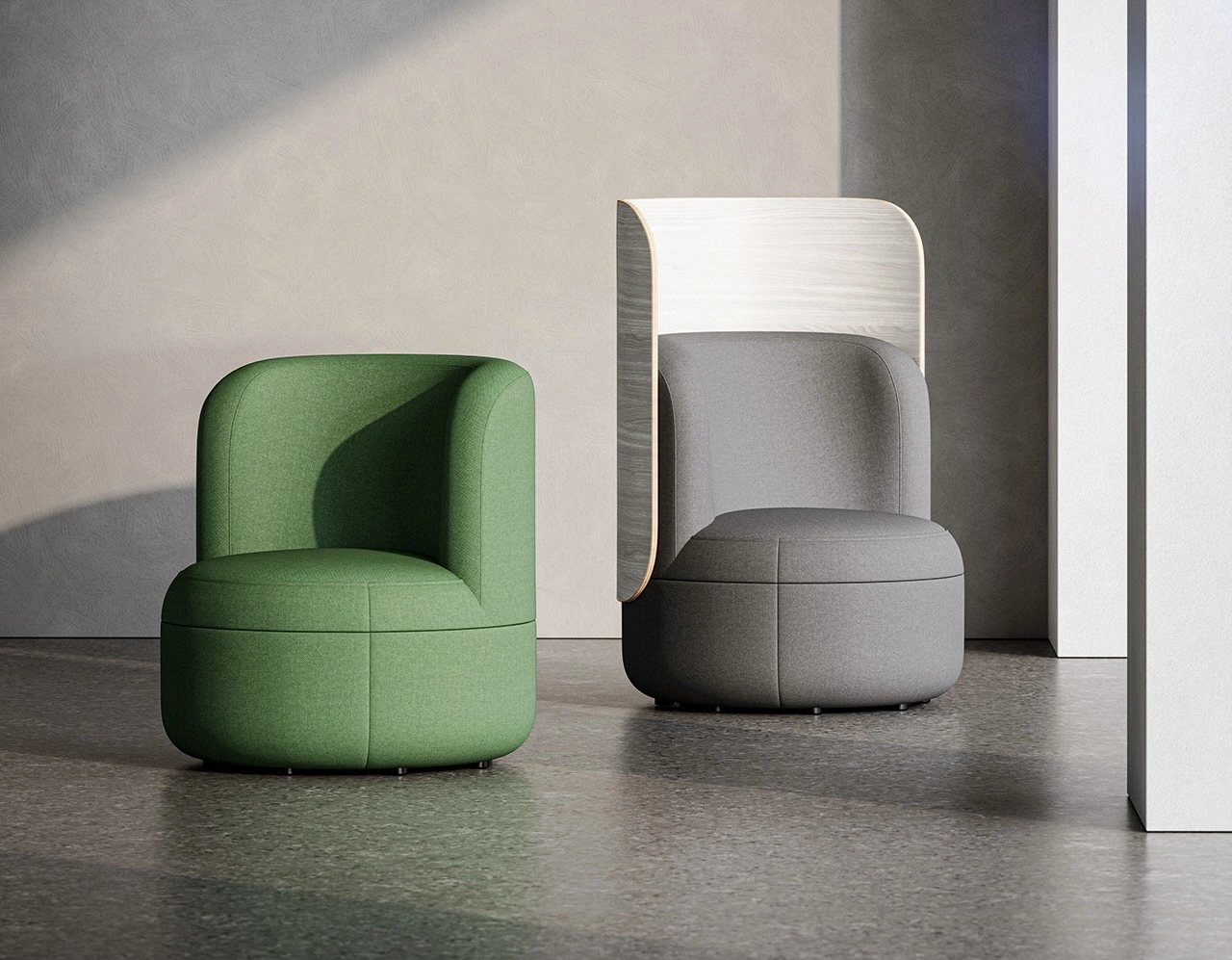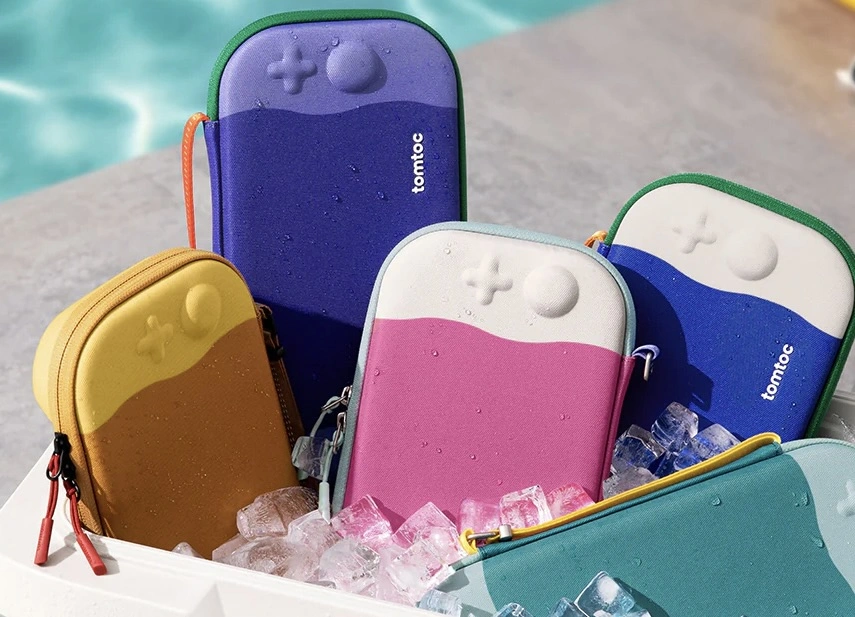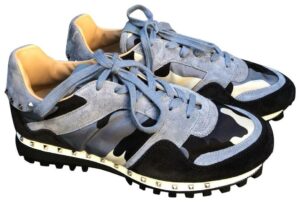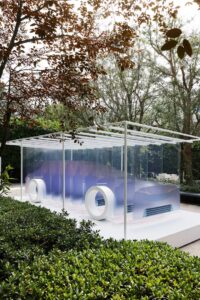In the ever-expanding world of medical robotics, most machines follow a predictable visual grammar: sleek panels, minimalistic interfaces, and clinical whites. Their aesthetics match their mission—functional, unobtrusive, and sterile. But now, amid the chrome and code of this future-forward field, something curiously poetic has arrived.
It’s called hirob—a robotic arm reimagined to mimic the rhythmic, grounding motion of a horse’s gait. Engineered by KUKA, the German powerhouse behind many of the world’s leading industrial robotic solutions, hirob doesn’t just assist in recovery. It moves in a way that feels alive, offering a form of therapy that straddles biology and machinery with remarkable elegance. At once startlingly innovative and deeply human, hirob is a reminder that rehabilitation doesn’t need to be cold, slow, or confined to the clinic. It can be immersive. Even soulful.
A New Kind of Gait Training
Rehabilitation robots have already reshaped post-trauma recovery, especially in gait training after strokes, surgeries, and injuries involving the spine or limbs. Exoskeletons help patients relearn how to walk. Robotic treadmills offer dynamic surface feedback. Companion robots provide emotional support to patients facing cognitive or neurological challenges. In many of these systems, progress is marked in inches, and interaction remains passive.
hirob breaks that mold.
Designed for patients recovering from motor dysfunction, hirob offers a rideable experience—an equine-inspired rhythm that stimulates the sensorimotor system. Its motion is not linear or static. It mirrors the complex, three-dimensional dynamics of a horse walking—a motion that has been studied and proven to engage deep postural muscles, challenge balance, and improve coordination.
By sitting atop hirob, patients are gently rocked into engaging their core, hips, and spine in ways that traditional therapy can’t always replicate. They are not simply riding a machine—they are syncing with a flow that feels organic, memory-driven, and emotionally resonant.
Why a Horse?
Therapeutic horseback riding—hippotherapy—has long been celebrated for its benefits in neurological rehabilitation. Studies have shown that riding a horse can improve gross motor function, muscle tone, and even cognitive focus in patients with conditions ranging from cerebral palsy to multiple sclerosis. The rhythm and warmth of the horse, the need for balance and coordination, the meditative pacing—all combine to create a powerful rehabilitative environment.
hirob mimics these very dynamics—without the unpredictability or logistical complexity of a live animal. It transforms KUKA’s industrial-grade robotic arm into a safe, programmable, and highly controlled movement platform. Add a saddle. Add feedback sensors. And suddenly, you have a therapeutic ride that can be deployed in a hospital, rehabilitation center, or even home.
This isn’t novelty. It’s neuroplasticity, harnessed through design.
The Engineering Behind the Empathy
At its heart, hirob is a feat of engineering precision. KUKA, known globally for its high-performance robotic arms used in automotive manufacturing and automation, repurposed one of its six-axis robotic units for therapeutic movement. That means the machine isn’t just mimicking movement; it’s replicating biomechanically accurate equine patterns in multiple dimensions.
The motion system is fluid, adaptive, and precise. Therapists can tailor ride profiles based on patient needs—slow and gentle for early-stage recovery, or more dynamic for those building stamina and balance. Sensors track movement in real-time, collecting data on posture, reaction, and muscle engagement. Feedback loops allow the system to adjust gait patterns during use, ensuring safety while optimizing challenge.
hirob isn’t only responsive—it’s intelligent. And unlike a treadmill or passive robotic support, it encourages patients to actively engage in their recovery.
Form Meets Function: The Aesthetic Turn
While most medical devices emphasize utility, hirob carries a hint of elegance. The saddle, ergonomically molded, is reminiscent of equestrian gear but adapted for clinical use. The robot’s frame—though clearly mechanical—moves with a softness that evokes organic motion. There is something strangely intimate about watching hirob in action. It pulses, pauses, shifts weight. It’s as if memory lives in the machine’s joints.
That design decision is significant. In rehabilitation, emotional engagement can directly impact outcomes. Patients who enjoy their therapy—who feel connected to the process—often demonstrate higher compliance and faster progress. By evoking the familiarity and romance of horseback riding, hirob creates an emotional bridge that no exoskeleton can replicate.
In this way, hirob sits at the rare intersection of industrial design, neurology, and emotional intelligence. It’s functional art with a medical mission.
A Robot for All Ages
hirob is not limited to one type of patient. It’s proving effective across age groups and conditions. For children with motor developmental delays or neuromuscular disorders, hirob offers a safe and exciting way to develop control and strength. For adults recovering from spinal cord injuries, strokes, or orthopedic surgeries, it restores muscle memory and balance. For elderly patients, it helps prevent muscle atrophy and preserves postural integrity.
In an aging world where mobility disorders are on the rise—and where loneliness among seniors is becoming a public health crisis—robots like hirob offer an essential new chapter. They’re not just functional. They’re engaging. They offer companionship not in the form of conversation, but through shared motion and presence.
Companion Robots and the Emotional Horizon
hirob enters the field during a golden age of companion robotics. Robots like PARO the seal, ElliQ, and LOVOT are already in use in senior homes, offering cognitive stimulation, companionship, and routine regulation. These robots don’t look human. They don’t need to. They succeed because they offer affective presence—the feeling that someone (or something) is there, noticing you, reacting to you.
hirob builds on this ethos. It doesn’t speak. It doesn’t blink or wave. But it invites participation. It draws patients out of themselves. It asks for interaction and gives back motion, rhythm, and sensation—all the foundational elements of bodily awareness.
This physical rapport is its own kind of empathy. A language written in movement rather than sound.
Looking Ahead: The Future of Robotic Rehabilitation
The implications of hirob go far beyond a single machine. It represents a shift in how we imagine rehabilitation itself. We’re moving from machines that assist to machines that converse with the body. From linear repetitions to multisensory experiences. From cold therapy rooms to spaces that feel more like studios or sanctuaries.
As KUKA continues to refine hirob’s movement library and interface, the machine will likely evolve into a customizable system—one that can simulate not just walking, but trotting, cantering, and other rhythm profiles tied to specific therapeutic goals.
Moreover, as data becomes central to healthcare, hirob’s ability to collect movement metrics, adjust programming, and communicate progress with therapists will make it an indispensable part of modern neuro-rehabilitation.
The next decade could see hirob units in physical therapy clinics, assisted living centers, pediatric hospitals, and athletic recovery labs worldwide. Not as replacements for human care—but as extensions of human intention, perfectly programmed to support, challenge, and inspire.
Final Reflections: Motion as Medicine
In an age where digital solutions often promise more than they deliver, hirob stands out as a robot that actually feels like it gives something back. It’s not just clinical. It’s poetic. It reminds us that movement is more than muscle—it’s memory, emotion, identity. The ability to move freely is fundamental to how we relate to the world. Losing that, through injury or illness, can be deeply traumatic. Regaining it—even gradually, even mechanically—can be life-changing.
hirob doesn’t offer miracles. But it offers a chance. A rhythm. A ride.
And in that motion, something powerful happens. Muscles remember. Posture returns. The body reawakens. For a few minutes, perhaps even an hour, a patient rides again—not just a machine, but a motion made meaningful.
No comments yet.








